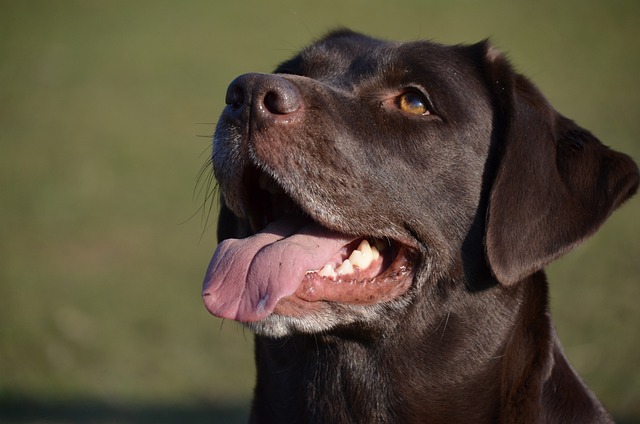
What are 5 common foods to feed dogs if they have an upset stomach
If you’ve ever watched your dog turn away from their food, then spend the next hour pacing and whimpering, you know the panic of an upset stomach.
Picture this: Your golden retriever, Max, just came back from a rainy walk in Central Park. He’s sneezing, his nose is runny, and he’s curled up shivering on his bed. Meanwhile, he smells like wet earth and pond scum. Your instinct screams "bath!" – but wait. Should you? When dogs show signs of a cold (like coughing, lethargy, or nasal discharge), bathing becomes a high-stakes decision. Here’s why: A dog’s ability to regulate body temperature is compromised when sick. Their primary cooling method—panting—is already strained by respiratory symptoms. Adding water exposure, especially in cooler environments (like a drafty bathroom or a chilly apartment), forces their body to divert energy from fighting infection toward staying warm. This thermal stress can worsen symptoms or prolong recovery. Even lukewarm water accelerates heat loss through evaporation. So, unless it’s absolutely necessary, skip the bath during active illness.
What If He’s Truly Filthy? (The "Must-Bathe" Protocol)
If Max rolled in something toxic or sewage-contaminated (e.g., stagnant pond water in a Brooklyn dog run), bathing is urgent. Here’s how to minimize risks:
Warm Prep: Heat the bathroom to 75-80°F (24-27°C) using a space heater before bringing him in. Close windows!
Speed & Support: Use a handheld showerhead with lukewarm water—never a cold hose outdoors. Pre-dilute vet-approved shampoo in a squeeze bottle. Wash only soiled areas (avoiding the head if possible).
The Dry Defense: This is critical. Towel-dry vigorously, then use a forced-air dryer on low heat held 12+ inches away. For short-haired breeds or seniors, follow with a warm (not hot) heating pad under half their bed for 20 minutes. Monitor for shivering!
Post-Bath Care: Offer warm bone broth and keep them in a heated room for 4-6 hours. Never bathe a dog with a fever (over 102.5°F/39.2°C).

Safer Alternatives to Full Baths
For minor dirt or odor between walks:
Spot Cleaning: Mix warm water with 1 tsp apple cider vinegar. Wipe soiled fur with a microfiber cloth.
Dry Shampoo: Choose alcohol-free, canine-specific foams (e.g., Burt’s Bees). Massage into fur, then brush thoroughly.
Paw Patrol: Use a shallow basin of warm water + Epsom salt at your entryway for muddy paws. Dry immediately!
Apartment Hack: Keep hypoallergenic pet wipes near the door for quick post-walk paw/coat wipes—this prevents messes and respects shared hallway cleanliness (a key lease requirement in cities like Chicago or Boston).
The Bigger Picture: Compliance & Care Culture
While bathing a sick dog is situational, core prevention is non-negotiable. Ensure Max’s DHPP and Rabies vaccines are current—this isn’t just health-conscious; it’s federally mandated across all 50 states for disease control. If he caught kennel cough at daycare, inform the facility immediately (they likely require Bordetella vaccination records under their liability policies). Remember, walking a sick dog? Always carry extra poop bags. Scooping remains legally required under municipal waste ordinances (e.g., L.A.’s Clean Streets Act)—parasites in feces spread easily to other pets.
Stress: The Silent Immune Killer
Notice Max hiding when you reach for the shampoo bottle? Forcing a bath on an anxious, sick dog violates core Western animal welfare principles. Positive reinforcement is paramount: Lure him into the tub with high-value treats days before he’s ill, making it a happy space. If he resists during illness, stop immediately. Never scold or restrain aggressively—this spikes cortisol, suppressing his immune response. Instead, try calming tactics:
Apply a lick mat coated with peanut butter to the tub wall.
Use an Adaptil (pheromone) spray on towels.
Consult your vet about anti-anxiety aids if bath stress is severe.
When to Call the Vet (Not Google!)
Bathing won’t cause a cold, but it can mask warning signs. If Max has:
Green/yellow nasal discharge
A cough lasting >48 hours
Refusal to eat/drink
Skip home remedies and schedule a vet visit. Underlying issues (like pneumonia or canine flu) need medical intervention—delaying could breach your duty of care under animal neglect laws in states like Oregon or New York.
Final Thought: Your instinct to keep Max clean is loving—but when he’s under the weather, warmth and rest trump spotlessness. Prioritize gentle wipe-downs and consult your vet before sudsing up. What’s your go-to trick for keeping a sick dog comfortable without a full bath?

If you’ve ever watched your dog turn away from their food, then spend the next hour pacing and whimpering, you know the panic of an upset stomach.

If you’ve ever cleaned up diarrhea or watched your dog vomit after meals, only to feel helpless as they refuse their next bowl of food, you know the stress of a sensitive stomach.

If you’ve ever stared at the ingredient list on your dog’s kibble, wondering what “meat by-products” really are, you’re not alone. New dog owners

If you’ve ever noticed your dog suddenly shaking their head like a wet towel, or pawing at their ear until it’s red and sore, you might’ve wondered if they’re just being “naughty.”

Finding worms in your dog’s stool or noticing them scooting uncomfortably across the floor is enough to make any pet owner’s heart sink.

If you’ve ever dreamed of having a dog but hesitated because your eyes water and nose runs around furry pets, you’re not alone.